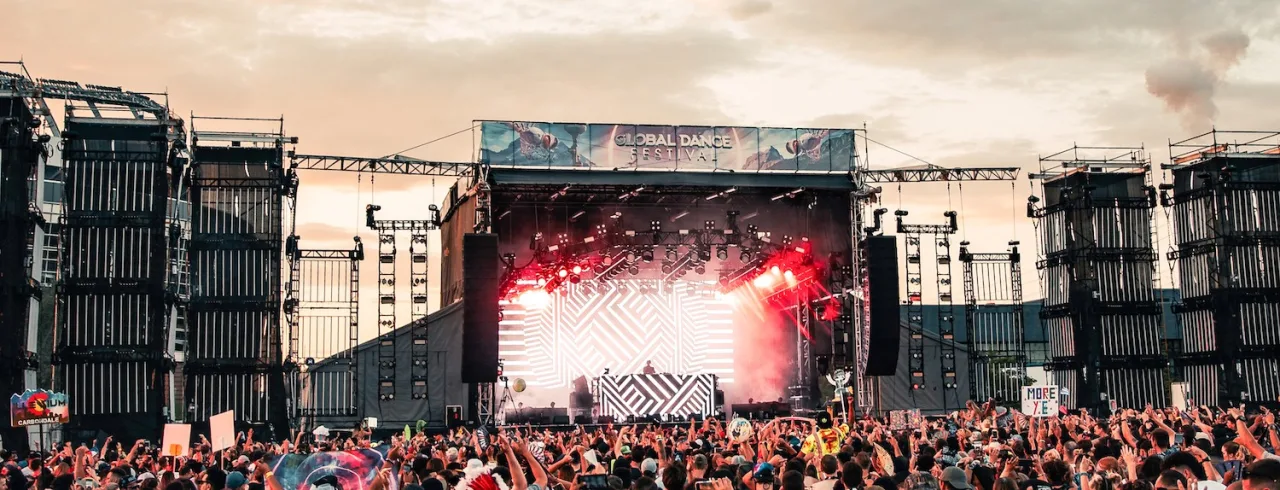Blitz News Digest
Stay updated with the latest trends and insights.
When Concerts Become Festivals: A Celebration of Sound and Chaos
Dive into the electrifying world where concerts transform into epic festivals, blending sound, chaos, and unforgettable memories!
The Evolution of Concerts: How Single-Stage Events Transformed into Multi-Act Festivals
The evolution of concerts has seen a remarkable transformation from **single-stage events** featuring a single artist to sprawling **multi-act festivals** that showcase a variety of genres and performances. In the early days of live music, audiences were treated to intimate performances at small venues or community gatherings. These concerts were simple affairs, often highlighted by a single headline act, allowing fans to enjoy a focused musical experience. However, as music became more diverse and popular, the demand for a more immersive experience grew, leading to the rise of festivals that offered a broader array of acts and entertainment.
With the advent of large-scale multi-act festivals, such as Woodstock in the 1960s and Glastonbury in the 1970s, the concert landscape expanded dramatically. These festivals not only featured multiple famous artists but also encompassed various activities, including art installations, food vendors, and camping options, making them a **weekend experience** rather than just a concert. The blend of diverse musical acts performing on multiple stages allowed fans to discover new artists while enjoying their favorites, thus cementing the festival model as a staple in the music industry. Today, **multi-act festivals** like Coachella and Lollapalooza continue to define modern music culture, illustrating how concerts have evolved into grand celebrations of sound and community.

Navigating the Chaos: A Guide to Enjoying Festivals Without Losing Your Mind
Attending a festival can be an exhilarating experience, but the chaos can often feel overwhelming. To navigate the chaos and truly enjoy your time, start by planning in advance. Create a schedule that outlines the events you want to attend, and prioritize them based on your interests. This will help you focus on what truly matters rather than getting lost in the overwhelming number of activities available. Don't forget to factor in some downtime to recharge; a short break can be vital in maintaining your energy levels throughout the festivities.
Once you're at the festival, make sure to stay organized. Use a festival checklist to ensure you have all the essentials—from tickets and identification to sunscreen and portable chargers. You can also download the festival's official app if available, which often provides real-time updates and maps. Finally, keep communication lines open with your friends; having a meeting point in case of separation can save you a lot of stress. By following these tips, you can make the most of your festival experience without losing your mind amidst the festivities.
What Makes a Music Festival Different from a Concert? Exploring the Key Differences
When it comes to live music experiences, music festivals and concerts are often seen as interchangeable, but they possess distinct characteristics that set them apart. A music festival typically spans several days and features multiple artists across various genres, showcasing a wider range of musical talent. This immersive experience offers attendees not just music, but also diverse activities, art installations, and community engagement. In contrast, a concert usually focuses on a single artist or band performing a setlist for a more concentrated experience, with the primary objective being to enjoy that specific performance.
Another key difference lies in the atmosphere and audience experience. Music festivals often cultivate a vibrant, communal environment where attendees camp together and participate in various workshops and events, creating a sense of belonging and shared passion. In a concert setting, while enthusiasm runs high, the experience is generally more structured, with seating arrangements and a defined start and end time. Ultimately, both music festivals and concerts offer unique ways to enjoy live music, but their differences in format and experience cater to different preferences among music lovers.